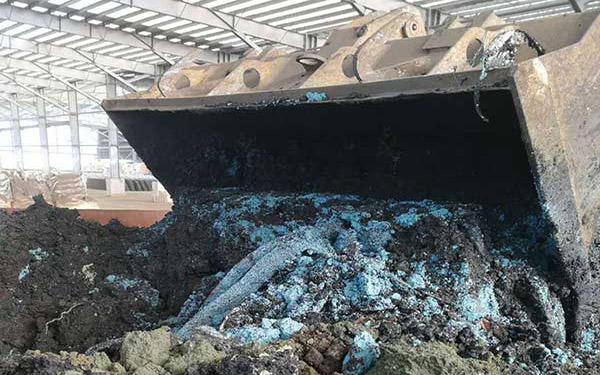As mentioned earlier, hazardous wastes are generally corrosive, toxic, flammable, reactive, and infectious. Today we are introducing the corrosivity, toxicity and infectivity of hazardous waste.
The corrosive nature of hazardous wastes refers to the substances that have tendency to corrode or dissolve such as tissues, metals, etc., and have acid or alkaline properties. Common corrosive hazardous wastes are: (1) vinyl chloride refining process; (2) waste acid and acid sludge produced by petroleum refining process; (3) sulfuric acid and sulfurous acid, hydrochloric acid, hydrofluoric acid, phosphoric acid and sub-waste acid, solid acid and acid slag produced during the production and preparation of phosphoric acid, nitric acid and nitrous acid.

The toxicity of hazardous waste is divided into acute toxicity and leaching toxicity. Acute toxicity refers to the effect of poisoning or even death caused by exposure of a foreign compound to a body (human or laboratory animal) once (or multiple times within 24 hours). Leaching toxicity refers to the leaching of solid hazardous wastes, where harmful substances migrate and transform, pollute the environment, and the toxicity of leached harmful substances is called leaching toxicity. Common toxic hazardous wastes are:
(1)waste mercury-containing fluorescent tubes produced during production, sale and use;
(2) waste electrical and electronic products, electrical and electronic equipment produced in industrial production, living and other activities, Waste lead-acid batteries, cadmium-nickel batteries, mercury oxide batteries, mercury switches, cathode ray tubes, and polychlorinated biphenyl capacitors, which are classified and collected after disassembling, crushing, and mashing;
(3) discarded printed circuit boards, etc.
The infectivity of hazardous waste refers to pathogens such as bacteria, viruses, fungi, and parasites, which can invade local tissues and systemic inflammatory reactions caused by human body. Common infectious hazardous wastes are: (1) medical waste; (2) waste that needs to be collected and disposed of to prevent animal infectious diseases; and (3) unaffected human or environmental impacts from research, development and teaching activities. Chemical waste and more.
"Rotary Rake Triple Cylinder&Multi-Loop" drum dryer produced by Jiaozuo ZJN Environmental Protection Equipment Technology Co., Ltd., is equipment specially for high humidity and high viscosity series industrial solid (dangerous) waste sludge drying. It adopts advanced "rotary and spin rake design”, magical "material guiding and lifting plate technology", unique "three-stage air volume, temperature automatic control technology" "W + S" material handling system. The unique "boiler flue gas waste heat" drying process, enables enterprises to use heat without cost, heating unit requires no invest, zero emissions of exhaust gas! Save energy and reduce emissions, one solution for multiple purpose!
Copyright ©2022 by Jiaozuo ZJN Environmental Protection Equipment Technology Co., Ltd.